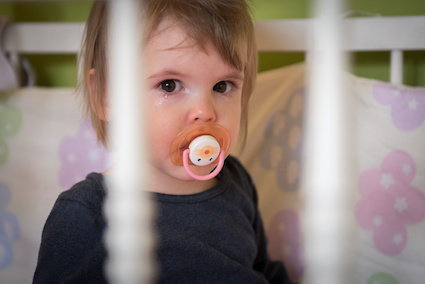
What Is a Blocked Tear Duct?
Symptoms of a Blocked Tear Duct
Another way to distinguish a blocked tear duct is that it typically begins during the first month of life. Also, it generally occurs usually just in one eye, though it can occur in both.
Treatment of Blocked Tear Ducts

In most cases, your baby's tear duct will open on its own between six months to one year of age without needing any treatment.
If it persists past one year, your doctor will want to refer you to an ophthalmologist for an evaluation. The ophthalmologist may open the tear duct with a probe.
Typically, the only treatment necessary for a blocked tear duct is massage. Of course, physicians' opinions vary on how best to do this, and some doctors are no longer recommending massage treatment at all. It is important to speak to your doctor about his or her preference in treating your child.
General Tips for Managing a Blocked Tear Duct
- Limit your child's time in the wind, cold, and sunlight, which can irritate already sensitive eyes.
- ALWAYS wash your hands before touching a baby's face, especially the eyes or surrounding eye area.
- Use a clean, damp washcloth to remove any excess secretions around your baby's eyes. Remember to always use a new clean section of the washcloth with each wipe of the eye in order to help prevent infection.
- Also, remember to always wash your baby's eyes from the inner corner (near the nose) to the outer corner to avoid introducing bacteria into your baby's tear duct.
- If your baby's doctor suggests it, you may gently massage the area of the duct blockage, which can prevent fluid buildup.
- If you notice that your baby's eye is red or inflamed with yellow or milky discharge, contact your doctor immediately as antibiotic treatment may be necessary. See: Pink Eye (Conjunctivitis)
- Be sure to follow your doctor's instructions carefully when administering any medications or or following treatment instructions.
